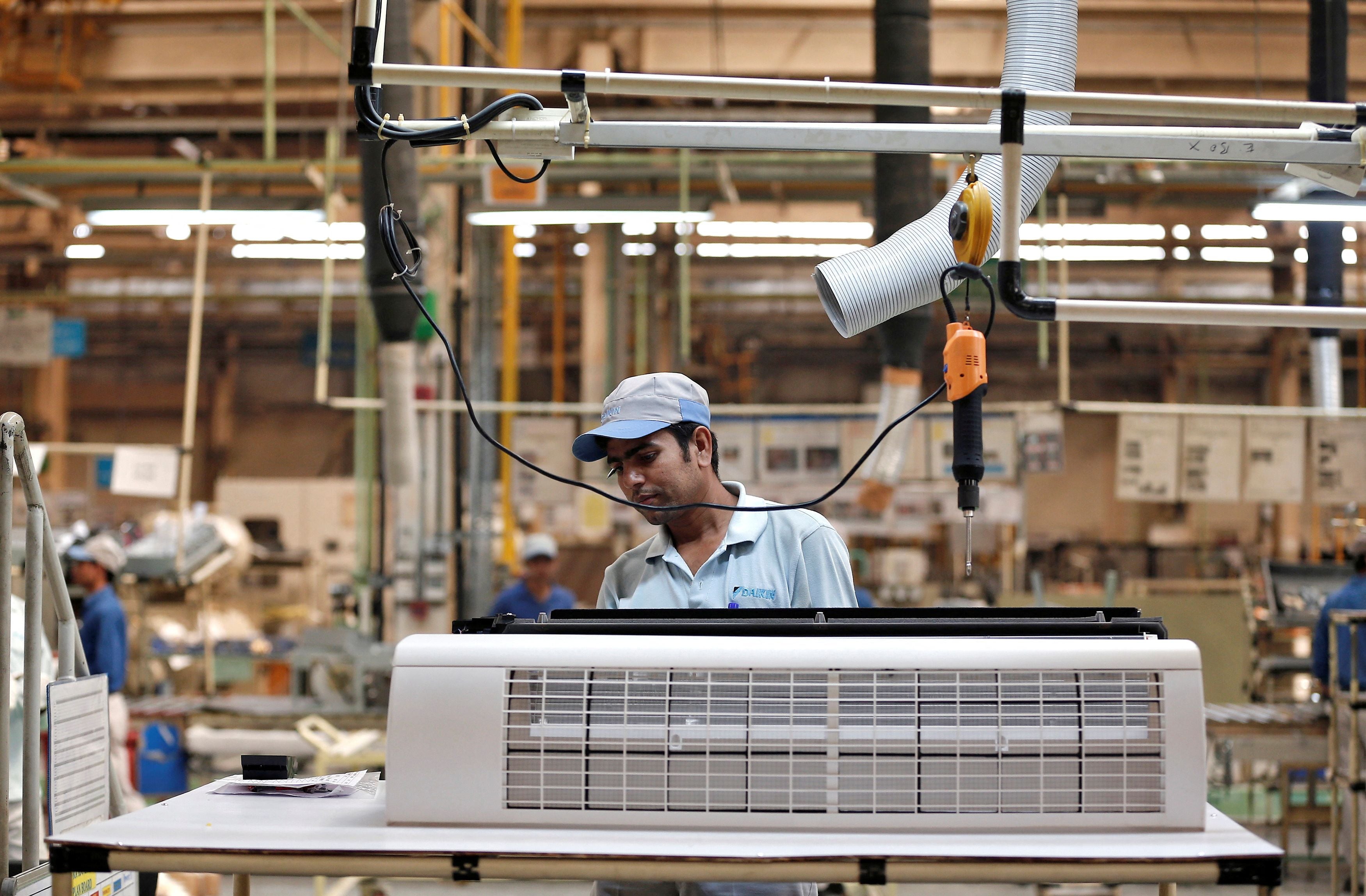India’s government is seeking to limit temperature settings on new air conditioners to save electricity in what is considered the fastest-growing market for them.
The power minister has proposed a rule requiring air conditioners sold in the country to have thermostats that can be set no lower than 20C.
Indian officials hope the restriction will create massive energy savings in the country of over 1.4 billion people. Between 10 and 15 million air conditioners are sold in India annually as incomes and urbanisation increase along with the temperatures.
The current lowest setting is 17C. Officials say each degree an air conditioner is turned up saves about 6 per cent on energy.
Proposed change draws mixed reaction
Energy experts say the proposal is a positive step but that requiring units to be more energy efficient will help more.
Power minister Manohar Lal Khattar said the proposed rule would take effect soon but wasn't specific about timing.
The proposal has received mixed reviews from people living in India's sweltering cities.
“Overall, I think it’s good to try and save energy but at the same time I hope the government makes sure people are not too inconvenienced,” said Vikram Kannan, 37, a teacher from the humid southern city of Chennai. “Sometimes there’s no choice but to set a low air conditioner temperature in cities like Chennai because it’s just way too hot and humid. My daughter gets heat pimples at times if we don’t do this.”
Air conditioners are fast becoming some of the biggest energy guzzlers in India. Room air conditioners accounted for nearly a quarter of the electricity consumed during periods of highest usage in 2024, a measure known as peak demand, according to researchers at the University of California, Berkeley. New AC units added between 2019 and 2024 increased India’s peak demand by an amount roughly equivalent to what it would take to power New Delhi for a year, they estimated.
Energy demand is typically highest during summer months when temperatures can reach 51C in parts of the country.
If changes aren’t made, India is expected to have power shortages by next year. India’s hunger for energy is also a key reason the country is one of the highest emitters of planet-heating gases. Clean energy use is growing but most of India’s electricity is provided by climate-polluting fossil fuels such as coal.
Nikit Abhyankar, a leader of the India Energy and Climate Center at the University of California, Berkley, said that Delhi, like other major Indian cities, was now experiencing dual peaks in electricity use – one in the afternoon and another around midnight – driven largely by air conditioners. While solar energy can help offset daytime demand, nighttime cooling still relies heavily on fossil fuels.

Rule changes can nudge consumers to use less energy
The air conditioner proposal is the latest in a series of government measures over the past decade aimed at saving energy, such as mandating that government offices be cooled at no less than 24C.
In 2022, the government launched the Mission Life programme that encouraged people to reduce emissions by cutting electricity use or skipping unnecessary car trips. The initiative announced with much fanfare received mixed responses.
Some people are supportive of the proposed change to air conditioner settings. Sunil Kumar, 47, from East Delhi, said that the rule could prevent fire hazards and lower bills.
“People used to live without air conditioners. We can adjust,” Mr Kumar, who makes a living driving an autorickshaw in the city, said.
Surjeet Singh, a businessman in Delhi, said turning air conditioners down to their current lowest setting was “unnecessary”.
“People have gotten too comfortable,” he said, suggesting that cities could invest in planting trees to tackle urban heat.
Indian air conditioners are inefficient
Mr Abhyankar argued that while changing temperature settings could help, requiring ACs to be energy efficient would do more.
“Tightening the minimum efficiency standards can change things pretty significantly,” Mr Abhyankar, who has also studied the energy sector in the US, China, Indonesia and Vietnam, said.
Calling the proposed rule a “step in the right direction,” Pramod Singh, energy savings expert with the Alliance for an Energy Efficient Economy in Delhi, said replacing India’s estimated 80 million older-generation inefficient air conditioners was a key challenge for the government.
Many units available in India were so inefficient they couldn't be sold in many other countries, Abhyankar said.
“Although India imports most key components for its air conditioners from China, nearly 80 per cent of air conditioners that are currently sold in India would be banned in China,” he said.
Energy experts say other small changes can reduce energy use and customer costs, like making sure all new buildings are adequately ventilated, combining ACs with other cooling methods and using smart technologies to run them.
“Air conditioner use reduces significantly if users also run their ceiling fans, as the room cools much faster,” Mr Abhyankar explained.







